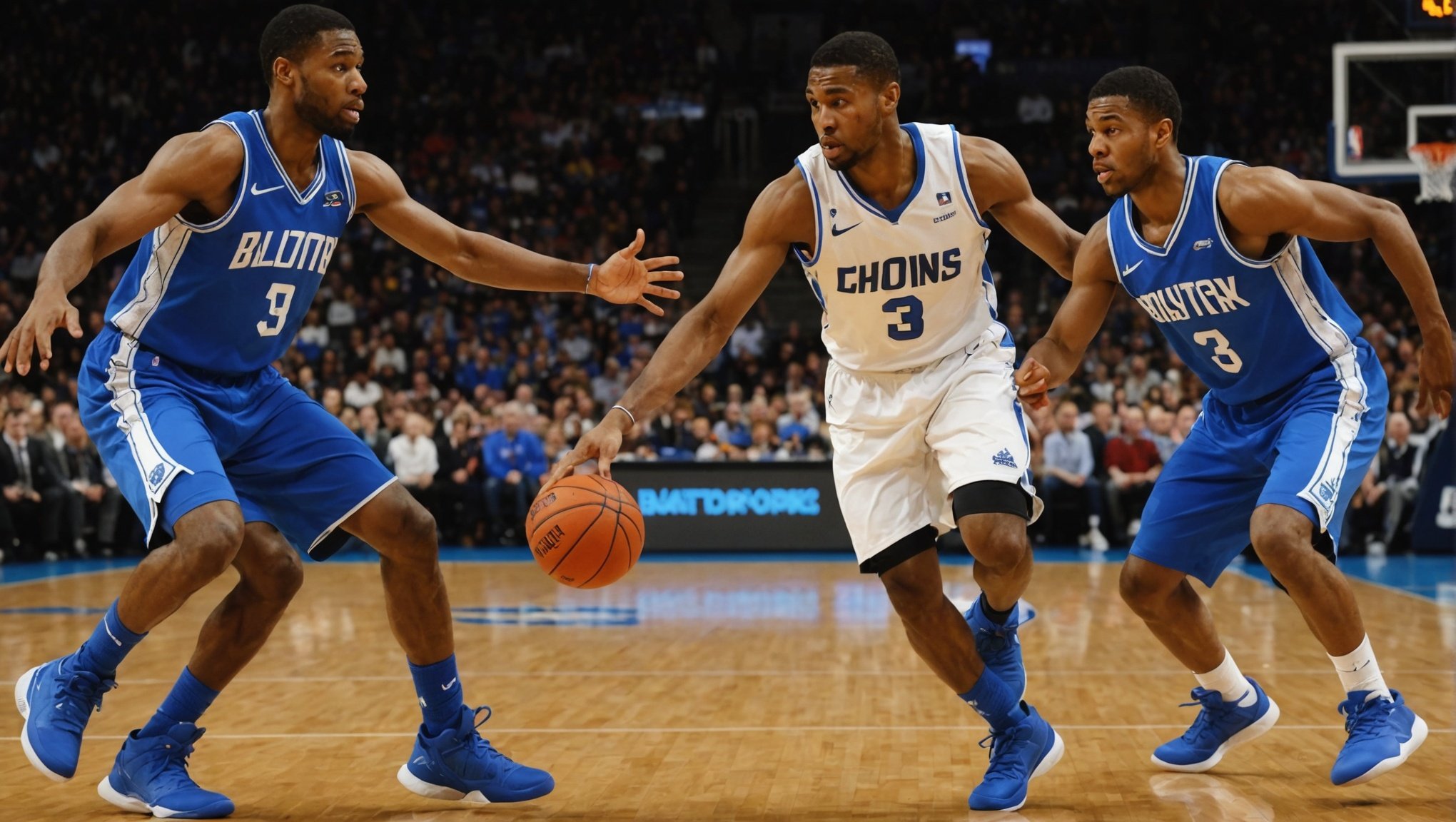Unlocking Superior On-Court Decision-Making: Strategies for UK Basketball Players
The Importance of Decision Making in Basketball
Decision making is the heartbeat of any successful basketball team. It is the difference between a well-executed play and a turnover, between a win and a loss. For UK basketball players, developing superior on-court decision-making skills is crucial for enhancing their performance and contributing to the team’s success.
Cognitive Skills and Basketball Performance
Cognitive skills, such as the ability to see the game, analyze it quickly, and react accordingly, are vital for basketball players. As Jim Crutchfield, the NCAA D2 Nova Southeastern head basketball coach, emphasizes, “We talk about what we call ‘the process’ here . . it’s a three part process that goes into that decision-making . . number one, you’ve got to see the game; and two, you’ve got to be able to analyze it quickly; and three, you have to be able to react.”[4]
In the same genre : Building Resilience: Strategies for UK Basketball Coaches to Support Players Through Back-to-Back Losses
This process involves more than just physical skills; it requires a deep understanding of the game and the ability to make split-second decisions under pressure. Here are some key cognitive skills that basketball players need to develop:
- Situational Awareness: The ability to read the game and understand the positions of teammates and opponents.
- Quick Analysis: The capacity to analyze the situation rapidly and make informed decisions.
- Reaction Time: The speed at which a player can react to the analyzed situation.
Multi-Sport Participation: A Key to Enhanced Decision Making
Engaging in multiple sports is a powerful strategy for enhancing decision-making skills on the basketball court. Multi-sport participation offers a range of benefits that can significantly improve a basketball player’s performance.
In the same genre : Strategies for UK Basketball Coaches to Successfully Navigate Multi-Age Team Dynamics
Transferable Skills Gained from Different Sports
Participating in various sports cultivates a set of transferable skills that are beneficial for any athlete. Here are some examples:
- Footwork and Spatial Awareness: Playing soccer can improve footwork and spatial awareness, skills that are highly valuable in basketball.
- Endurance and Breathing Control: Swimming enhances endurance and breathing control, which can help basketball players maintain their energy levels throughout the game.
- Quick Lateral Movements and Flexibility: Sports like tennis or gymnastics require quick lateral movements and flexibility, which can translate into improved agility and balance on the basketball court.
Here is a detailed list of transferable skills gained from different sports:
- Soccer:
- Improved footwork
- Enhanced spatial awareness
- Better teamwork and communication skills
- Swimming:
- Increased endurance
- Improved breathing control
- Enhanced overall physical fitness
- Tennis/Gymnastics:
- Quick lateral movements
- Flexibility and agility
- Enhanced reaction time
Social and Psychological Benefits
Multi-sport participation also provides significant social and psychological benefits that can enhance a player’s decision-making abilities. Here are some key benefits:
- Teamwork and Leadership Skills: Participating in diverse sports environments allows athletes to collaborate with different team members, fostering communication and cooperation.
- Resilience and Adaptability: Engaging in multiple sports helps athletes develop resilience and adaptability, crucial for handling the pressures of competitive basketball.
- Positive Sports Culture and Community: Multi-sport participation contributes to the development of a positive sports culture and community, where respect and camaraderie are paramount.
Training Strategies to Enhance Decision Making
Effective training is essential for developing superior on-court decision-making skills. Here are some strategies that coaches and players can use:
Scrimmage Philosophy and The Process
Coach Jim Crutchfield’s scrimmage philosophy is a great example of how to train for decision making. He emphasizes playing full-court, face-guard, man-to-man, trap, and chase during the offseason. This approach helps players get in shape both mentally and physically.
Here are some key points from his philosophy:
- Full-Court Play: Playing full-court games during the offseason to build endurance and mental toughness.
- Charting and Scoring: Charting winning and losing in even open gym sessions to create a competitive atmosphere.
- Video Review: Reviewing videotape to analyze good and bad decisions, focusing on effort-related aspects.
Cross-Training and Varied Movement Patterns
Incorporating varied movement patterns from different sports can significantly boost basketball performance. Here’s how coaches can implement cross-training:
- Incorporate Drills from Other Sports: Use drills from sports like soccer, tennis, or gymnastics to improve agility, balance, and reaction time.
- Focus on Functional Training: Use functional training methods that mimic the movements and demands of basketball to enhance players’ ability to navigate the court effectively.
Technology and Artificial Intelligence in Training
The integration of technology and artificial intelligence (AI) is revolutionizing the way basketball players train and make decisions on the court.
AI-Driven Analytics
AI-driven analytics can provide detailed insights into player performance, helping coaches identify areas for improvement. Here are some ways AI can be used:
- Player Tracking: AI can track player movements, providing data on speed, distance covered, and other performance metrics.
- Decision Analysis: AI can analyze game footage to evaluate the quality of decisions made by players, offering feedback on areas such as shot selection and defensive positioning.
Virtual Training Environments
Virtual training environments powered by AI can simulate game scenarios, allowing players to practice decision making in a controlled setting. Here are some benefits:
- Realistic Simulations: AI can create realistic game scenarios, enabling players to practice making decisions under pressure.
- Personalized Feedback: AI can provide personalized feedback to players based on their performance in these simulations.
Practical Insights and Actionable Advice
For UK basketball players looking to enhance their on-court decision-making skills, here are some practical insights and actionable advice:
Encourage Multi-Sport Participation
Parents and coaches should encourage young athletes to participate in multiple sports. Here are some tips:
- Experiment with Different Sports: Introduce children to various sports to find what they enjoy and excel in.
- Balance Structured Sports and Free Play: Ensure a balance between structured sports and free play to prevent over-specialization and burnout.
- Focus on Joy of Participation: Emphasize the joy of participation rather than performance outcomes to foster a lifelong love for sports.
Use Technology to Your Advantage
Leverage technology and AI to enhance training and decision-making skills:
- Utilize AI-Driven Analytics: Use AI-driven analytics to gain insights into player performance and identify areas for improvement.
- Engage in Virtual Training: Participate in virtual training environments to practice decision making in realistic game scenarios.
Unlocking superior on-court decision-making skills is a multifaceted process that involves cognitive development, multi-sport participation, effective training strategies, and the integration of technology and AI. By embracing these strategies, UK basketball players can significantly enhance their performance and contribute to the success of their teams.
Here is a comprehensive table summarizing the key points discussed:
| Strategy | Description | Benefits |
|---|---|---|
| Multi-Sport Participation | Engaging in various sports to develop transferable skills. | Improved footwork, spatial awareness, endurance, agility, and teamwork skills. |
| Cognitive Skills Development | Focusing on situational awareness, quick analysis, and reaction time. | Enhanced ability to see the game, analyze it quickly, and react accordingly. |
| Scrimmage Philosophy | Playing full-court games and charting winning and losing to create a competitive atmosphere. | Builds endurance and mental toughness; fosters a competitive spirit. |
| Cross-Training | Incorporating drills from other sports to improve agility and balance. | Enhances players’ ability to navigate the court effectively; improves reaction time. |
| Technology and AI Integration | Using AI-driven analytics and virtual training environments. | Provides detailed insights into player performance; offers personalized feedback and realistic game simulations. |
In the words of Coach Jim Crutchfield, “Our players have to play with confidence, and if they’re not confident players they don’t work well in our system because they have to be willing to attack the basket and look to score immediately.”[4] By combining these strategies, UK basketball players can develop the confidence and decision-making skills necessary to excel on the court.






